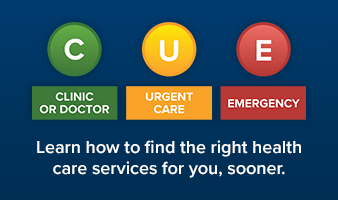Clean hands; clean chart
By Dr. Nancy Dixon
Winnipeg Regional Health Authority
Published Monday, October 26, 2020
Imagine using a method of contraceptive with only a 78 per cent success rate, or a home cleaning product that killed 78 per cent of bacteria - unacceptable right?
We agree. The WRHA currently has an overall average staff compliance rate of 78 per cent when it comes to performing hand hygiene during their shifts. We know we can do better than that.
While we had originally put in place a target of 80 per cent compliance with handwashing, I believe that target is too low. Together with our executive team, we've initiated a new target of 100 per cent compliance with hand washing in the WRHA because our patients, residents, clients and staff deserve that level of care.
Appropriate hand hygiene, performed when indicated, has repeatedly been shown to be the single most effective safety measure with the highest payoff in preventing the spread of infection both inside, and outside, of a health care setting. This fact has become inescapable to all of us in recent months as we've heard it repeatedly from Dr. Roussin, Dr. Theresa Tam and many other leading medical experts across the world.
We can protect ourselves, and others, from COVID-19 and other viruses by limiting physical contact and proximity with others and making sure that if we do need to have physical contact, that our hands are clean (and, right now, that we're wearing a mask!). And it's not just one or the other from this list, it's important that we put them all in place at once in order for our efforts to be successful.
In a health care setting, that importance is doubled because the health of those in our care is already compromised and it is up to us to protect them.
There are four ‘moments' of hand hygiene within health care that are audited each quarter to provide us with the report I've referenced above. A sample of units, representing every discipline and facility are observed to ensure staff perform hand hygiene: before having contact with a patient, before a clean or aseptic procedure (like putting a dressing on a wound), after possible contact with bodily fluids (such as if a child were to sneeze on you!) and after leaving one patient to move on to your next task or activity.
These moments seem intuitive, and in fact, they are for most of us. It can be challenging to really pin down why some staff do not comply but we have gained some insight into that thanks to a survey we performed of the whole of the region when it comes to hand hygiene. The survey had more than 4,000 people respond from all disciplines and offered us some important insight to apply in our efforts to improve our compliance with hand hygiene.
One of the key insights from our survey was that culture and mentorship have a big impact on the safety mindset of hand hygiene. If the unit, team or physician leader is not inclined towards the diligent practice of appropriate hand hygiene, it is likely that the remaining staff on the unit will also be less likely to participate because of lack of support and education.
Conversely, where we've seen successes and increased rates of compliance are areas where hand hygiene is woven into the culture of an entire team, unit or even facility. My alma mater, Deer Lodge Centre is an excellent example of that. Deer Lodge has had poor rates of compliance in the past but together, the leadership teams worked to offer a solution for all staff to feel safe and supported in politely reminding one another to clean their hands if someone forgot. Called the "Clean Wave" it is exactly as it sounds; one staff member can trigger another to wash their hands with a simple wave of their own hand during patient care activities.
That strategy proved successful at Deer Lodge and staff were particularly encouraged by the way it addressed any power imbalance of offering reminders to supervisors, managers or physicians on the team.
Physicians, as our report tells us, consistently have some of the lowest rates of compliance at 66 per cent in this most recent quarter (compared with 77 per cent compliance in Health Care Aides and 82 per cent in nursing staff).
Since my Leadership Team agrees that this level of physician compliance is unacceptable, they've agreed to work with me and we have, together through nominations and volunteers, put together a team of Hand Hygiene Champions. These champions, which will include physicians, nurses and allied health leaders, will be present at each site/ care area to serve as mentors, coaches and educators when it comes to hand hygiene.
Physician Champions in particular will be instrumental not only in influencing other physicians but in fostering a workplace culture where the safety of hand hygiene trumps the concerns some may have in calling out their colleagues or superiors to keep patients, and each other, safe.
Our Hand Hygiene Team (made up of these champions and infection prevention and control experts) provides education and resources on hand hygiene and is working on developing further tools and practices to improve the WRHA's compliance in this important area of patient safety. We are committed to improving our rates of hand hygiene and taking action to achieve that goal.
Dr. Nancy Dixon is the Chief Medical Officer for the WRHA. This column was published in the Winnipeg Free Press on Monday, October 26, 2020.

